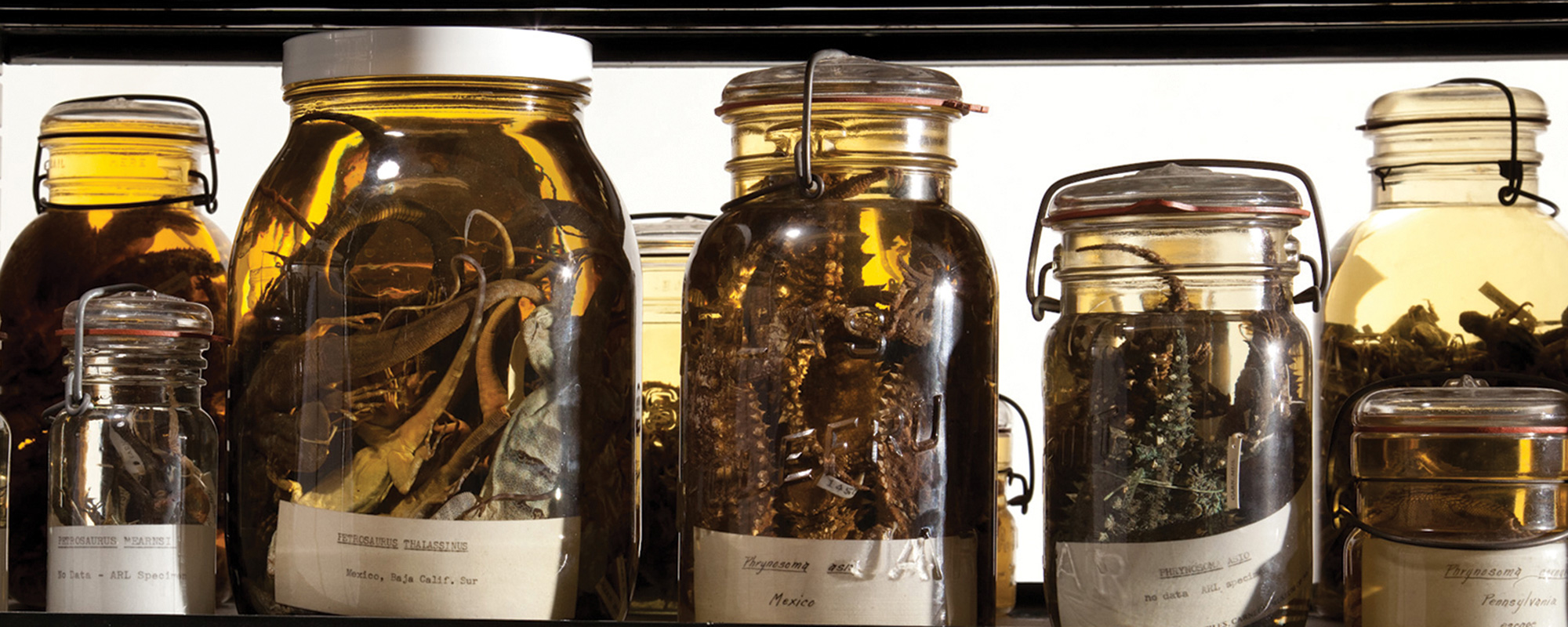Giving Forward:
Who:
Roger Smith and his grandson, Ben
What They supported:
Collection care and the Alcohol House at Carnegie Museum of Natural History
Why it matters:
“It’s really cool,” says Ben of one of the museum’s most scientifically significant collections, “and I want more people to see it.”
When Roger Smith brought his 12-year-old grandson, Ben, to a tour of Carnegie Museum of Natural History’s Alcohol House, he knew it would be special. Their visits to the Carnegie Museums always are. But he had no idea it would lead to a new kind of bond between generations.
The pair was blown away by what they saw that day. “I had no idea they had such a large collection of specimens in such a small space,” says Smith, a longtime museum donor and regular visitor to the Oakland museums. “I was amazed!”
“And there were so many different species,” says Ben.
What they learned is that the 112-year-old structure known as the Alcohol House is the resting place of 65,000 salamanders, 54,000 frogs, 29,500 snakes, 40,000 turtles, and 30,500 lizards from 170 countries— many of them collected at least 100 years ago and all preserved in glass jars filled with ethyl alcohol. Scientists from around the world regularly borrow specimens from the collection for their conservation research, yet few museum visitors have heard of the Alcohol House or seen what Ben and his grandfather saw that day. The pair would like to change that.
“It’s really cool, and I want more people to see it,” Ben says, “especially people who might not have the money to come to the museum.”
Smith and his grandson also learned that the museum was raising funds to upgrade the building, and make both the collection and the building accessible to more people. So on their way home, Smith asked Ben if he might like to join him in making a gift to the museum. When Ben agreed, his grandfather got specific.
“What if, instead of me giving you $10 for your allowance each week I give you $5,” Smith asked, “and then at the end of the year I’ll match that, so your $250 would grow to $500 and we would donate that to the Alcohol House?” Ben didn’t think twice. “I thought it was a great idea,” he says, adding that he felt good doing it.
“He does have a giving nature,” Smith says of Ben, proudly—something that Ben says he learned from his grandfather.
Thanks to a grant from the National Science Foundation, contents of the Alcohol House got their first big unveiling in 2017, in an interactive display that was part of the museum’s We Are Nature: Living in the Anthropocene exhibition. Now featured permanently in the museum’s first-floor Discovery Basecamp, the experience allows visitors to digitally explore 3D views of 70 jars from the collection.
Gifts from donors like Roger Smith and his grandson are now funding critical environmental upgrades to the Alcohol House and an exhibition inside.
“There’s a phrase I like, ‘Everybody can be a philanthropist’—and I think that’s true,” Smith says. “You can be a philanthropist on a more modest scale, like me. It’s a way of making a statement about what’s important in our lives, and wanting to contribute to things that improve the quality of life for others.”
To learn more about giving opportunities at Carnegie Museums, contact Liz McFarlin-Marciak at mcfarlinmarciakl@carnegiemuseums.org or 412.622.8859.
Receive more stories in your email
Sign upTags:
Science & Nature
